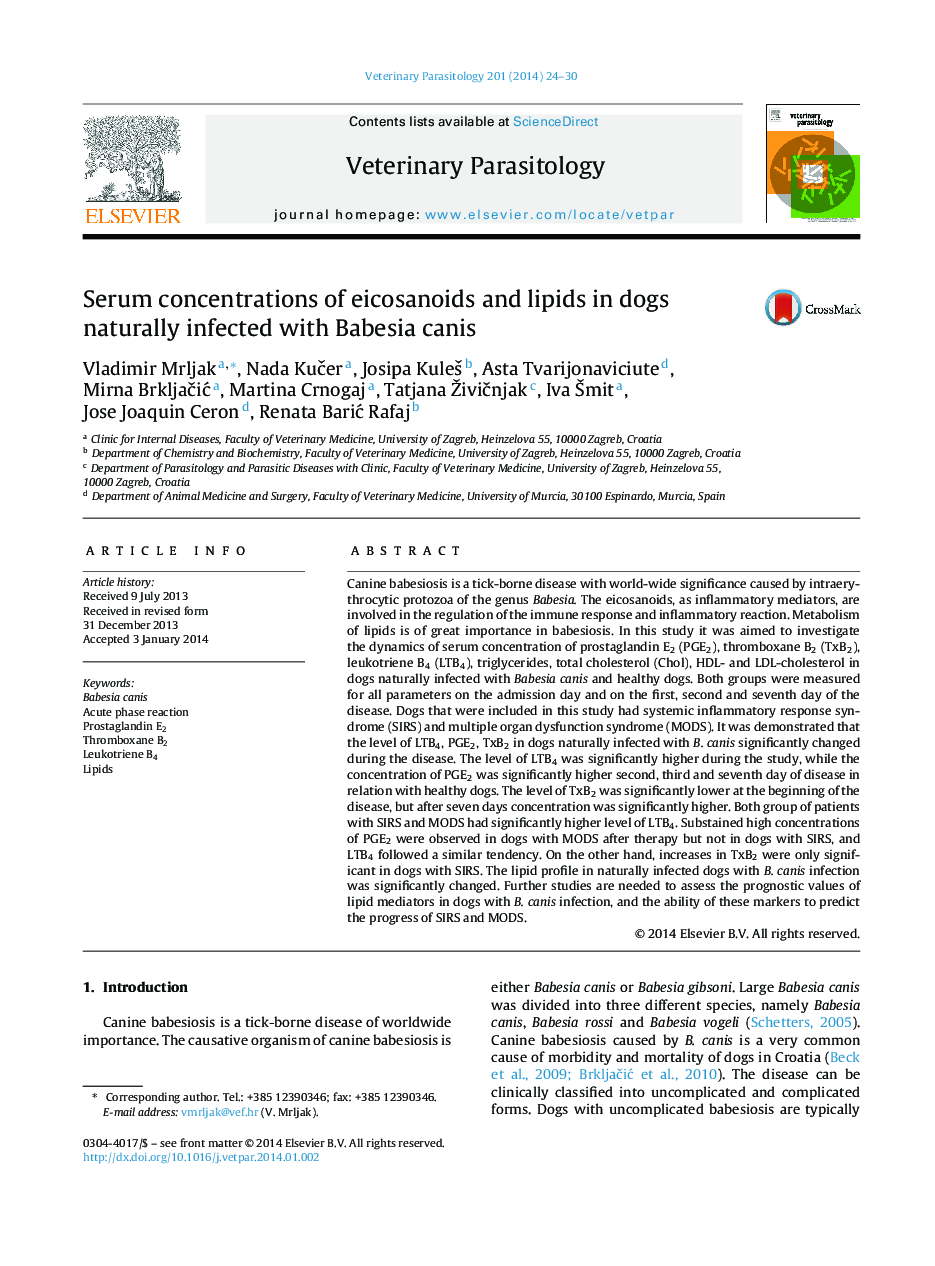| کد مقاله | کد نشریه | سال انتشار | مقاله انگلیسی | نسخه تمام متن |
|---|---|---|---|---|
| 5803287 | 1555689 | 2014 | 7 صفحه PDF | دانلود رایگان |

Canine babesiosis is a tick-borne disease with world-wide significance caused by intraerythrocytic protozoa of the genus Babesia. The eicosanoids, as inflammatory mediators, are involved in the regulation of the immune response and inflammatory reaction. Metabolism of lipids is of great importance in babesiosis. In this study it was aimed to investigate the dynamics of serum concentration of prostaglandin E2 (PGE2), thromboxane B2 (TxB2), leukotriene B4 (LTB4), triglycerides, total cholesterol (Chol), HDL- and LDL-cholesterol in dogs naturally infected with Babesia canis and healthy dogs. Both groups were measured for all parameters on the admission day and on the first, second and seventh day of the disease. Dogs that were included in this study had systemic inflammatory response syndrome (SIRS) and multiple organ dysfunction syndrome (MODS). It was demonstrated that the level of LTB4, PGE2, TxB2 in dogs naturally infected with B. canis significantly changed during the disease. The level of LTB4 was significantly higher during the study, while the concentration of PGE2 was significantly higher second, third and seventh day of disease in relation with healthy dogs. The level of TxB2 was significantly lower at the beginning of the disease, but after seven days concentration was significantly higher. Both group of patients with SIRS and MODS had significantly higher level of LTB4. Substained high concentrations of PGE2 were observed in dogs with MODS after therapy but not in dogs with SIRS, and LTB4 followed a similar tendency. On the other hand, increases in TxB2 were only significant in dogs with SIRS. The lipid profile in naturally infected dogs with B. canis infection was significantly changed. Further studies are needed to assess the prognostic values of lipid mediators in dogs with B. canis infection, and the ability of these markers to predict the progress of SIRS and MODS.
Journal: Veterinary Parasitology - Volume 201, Issues 1â2, 17 March 2014, Pages 24-30